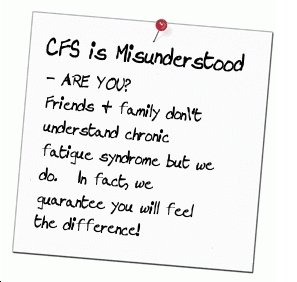The GI Diet Under the Spotlight
'I should be so lucky!' That's undoubtedly the phrase that will spring to most people's lips when they think about getting a body like Kylie's. But it seems we could all learn a thing or two from our favourite Pop Princess when it comes to shifting those pounds and staying in shape. Kylie is reportedly a fan of the Glycaemic Index or GI diet, which is currently taking the UK by storm.
But before dismissing it as just another 'celebrity slimming craze' only suitable for the rich and famous, there's some good news: this is a diet that most nutritionists and dieticians actually like, too. Here's the lowdown...
What exactly is the Glycaemic Index?
In 1981, professor of nutrition Dr David Jenkins was looking at how different carbohydrate-rich foods affected blood sugar levels in people with diabetes and discovered that, contrary to popular belief, many starchy foods affected blood sugar levels quite dramatically, while some sugary foods had little effect. From his research, he developed a scale called the Glycaemic Index, which quite simply ranked foods based on the effect they had on blood sugar levels.
How it works
The Glycaemic Index runs from 0 to 100 and usually uses glucose - which has a GI value of 100 - as the reference. The effect other foods have on blood sugar levels are then compared with this. In simple terms, the GI index tells us whether a food raises blood sugar levels dramatically, moderately or a little bit. Foods that have only a slow, small effect on blood sugar have a low GI value, while those causing a rapid and massive rise in blood sugar have a high GI value.
So what's the link with weight loss?
The theory behind diets based on the Glycaemic Index is that foods with a low GI value slowly release sugar into the blood, providing you with a steady supply of energy, leaving you feeling satisfied longer so that you're less likely to snack. In contrast, foods with a high GI value cause a rapid - but short-lived - rise in blood sugar. This leaves you lacking in energy and feeling hungry within a short time, with the result that you end up reaching for a snack. If this pattern is frequently repeated, you're likely to gain weight as a result of constantly overeating.
Glycaemic Index of foods
There are many books and websites that list the GI index for different foods. Food values may vary slightly depending on the source, but in general, they should all be roughly the same.
Many lists divide the foods into low, medium/moderate and high categories. Foods in the low category usually have a GI value of 55 or less; in the medium category, a GI value of 56 to 69; and in the high category, a GI of 70 or more. This Glycaemic Index Table gives examples of the GI values of food. You might be surprised by some of the foods included in the low and high categories - for example, 'healthy' rice cakes and branflakes actually have a high GI whereas salted peanuts and milk chocolate have a low GI value!
How do GI diets work?
Diets based on GI index simply encourage you to eat plenty of foods with a low GI value and avoid those with a high GI value. This helps to prevent swings in blood sugar, helping you feel fuller for longer. However, most GI diets also recommend cutting down on fat, especially saturates. This means many of the foods which have a low GI value but are high in fat - whole milk, crisps and chocolate, for example - are still limited.
What affects the GI value of a food?
There are several things. Firstly, the overall nutrient content of a food will affect its GI. For example, fat and protein affect the absorption of carbohydrate. This helps to explain why chocolate, which is high in fat, has a low GI value. It also explains why high-fat crisps have a lower GI value than low-fat jacket potatoes. Whole milk also has a low GI value because it's packed with protein and fat.
How you cook a food, the degree of processing and the ripeness and variety of a fruit, for example, also affect its GI. Even the structure of the carbohydrate itself influences the GI. For example, processed instant oatmeal has a higher GI than traditional rolled oats used to make porridge. This is because, as a result of the processing, the starch in instant oats is more easily exposed to digestive enzymes, causing it to break down and enter the bloodstream more rapidly.
Meanwhile, some foods have low GI values because they are packed with fibre, which acts as a physical barrier, slowing down the absorption of carbohydrate into the blood.
So what happens when I eat a meal?
GI index charts only identify the effect different foods have on bloods sugar levels when they are eaten on their own and, consequently, many nutritionists believe this is one of the main problems with GI diets. Basically, when you eat a mixture of foods together as in a meal, the GI value of that whole meal changes. As a guideline though, the more low GI foods you include in a meal, the lower the overall GI value of that meal will be.
Are there any cons to the GI diet?
As outlined above, one of the main limitations to GI diets is the fact it's difficult to identify the GI value of a meal. Meanwhile, some foods with a low GI value are also packed with fat and/or salt and contain few nutrients. Chocolate and crisps, for example, are high in fat and contain few vitamins and minerals. Meanwhile, a 50g pack of salted peanuts contains around 5g of salt - that's almost the maximum amount recommended by nutrition experts for good health!
Consequently, it's possible to follow a GI diet that's packed with fat and lacking in many of the nutrients you need to stay healthy. However, most GI diet plans come with advice to cut down on the amount of fat you eat and recommend avoiding many of the high-fat, low GI foods. For example, they recommend choosing skimmed milk over whole milk.
What do the experts think?
In general, most nutritionists and dieticians are supportive of the basic principles of the GI diet. They do, however, believe that you shouldn't get too hung up about avoiding all high GI foods because when foods are eaten together in a meal, that meal can have a very different GI value to the individual foods it contains.
How much weight can I expect to lose?
Most GI diets suggest you will lose around 1-2lb a week, possibly with a slightly greater loss in the first few weeks when your body loses water as well as fat. This follows the guidelines recommended by nutrition experts.
How does it differ from the Atkins Diet?
Unlike the Atkins Diet, which bans most carbohydrates, especially in the early stages, GI diets actively encourage you to eat many carbohydrates and antioxidant-rich fruit and veg. The diet is also high in fibre which means you're less likely to get constipated and, because carbohydrate isn't restricted to any great degree, you won't get the other unpleasant side effects associated with the Atkins Diet, such as bad breath and headaches. GI diets also tend to follow healthy eating guidelines and are low in fat, especially saturates. And if that's not enough, GI diets are much easier to follow if you are a vegetarian!
Are there any other health benefits to the GI diet?
Following a diet that includes plenty of foods with a low GI index may have a role in helping to prevent or reduce the risk of getting Type 2 or maturity-onset diabetes, according to experts at Diabetes UK, the largest diabetes organisation in the UK. Research has also shown that lower GI diets can help improve levels of 'good' cholesterol and so may reduce the risk of heart disease.
Is a GI diet suitable for people with diabetes?
Anyone with diabetes should always check first with their doctor before making changes to their diet. However, most diabetes experts agree that including foods with low GI value in meals can help to maintain even blood sugar levels. However, they also agree that eating to control control diabetes, isn't just about looking at the GI value of foods. You should also focus on eating a balanced, healthy diet you can stick with for life.
Further information
• Glycaemic Index Tables showing the GI index of popular foods
• GI Diet Plan Sample a typical day's eating plan
• WLR has separate UK and USA food databases with calorie and nutrition info for basic and branded foods. Register to get free access for 3 days.
• Living the GI Diet by Rick Gallop has recipes and uses a simple traffic-light system approach to glycaemic index dieting.
• You can search the university of Sydney's GI database at www.glycaemicindex.com
• Diabetes UK have advice specifically for diabetics www.diabetes.org.uk/faq/gi.htm
the A to Z directory of dealing with Health Problems & Self Care Strategies for natural remedies to your health issues.

Subscribe to get your weekly "Health Success Magazine" with a new complete & comprehensive Health Report in every edition!

to “Your Health Success”
our weekly F’R’E’E’ Newsletter
If you would like a free no-obligation private consultation or to contact Warren Tattersall for more information, please click here >> Contact Us

Click the books above to learn more about how we treat CFS naturally, to get your life back!
You will find many assorted Health Reports available for download free to you on this website!
Our free Health Success Reports are each available for you to download when you subscribe to receive them and their 7 part eCourse.
You can unsubscribe at any time, but we are sure you will want to receive all the email lessons of these informative ecourses.
Read more HERE to select the REPORT subjects of most interest (or concern) to you.









